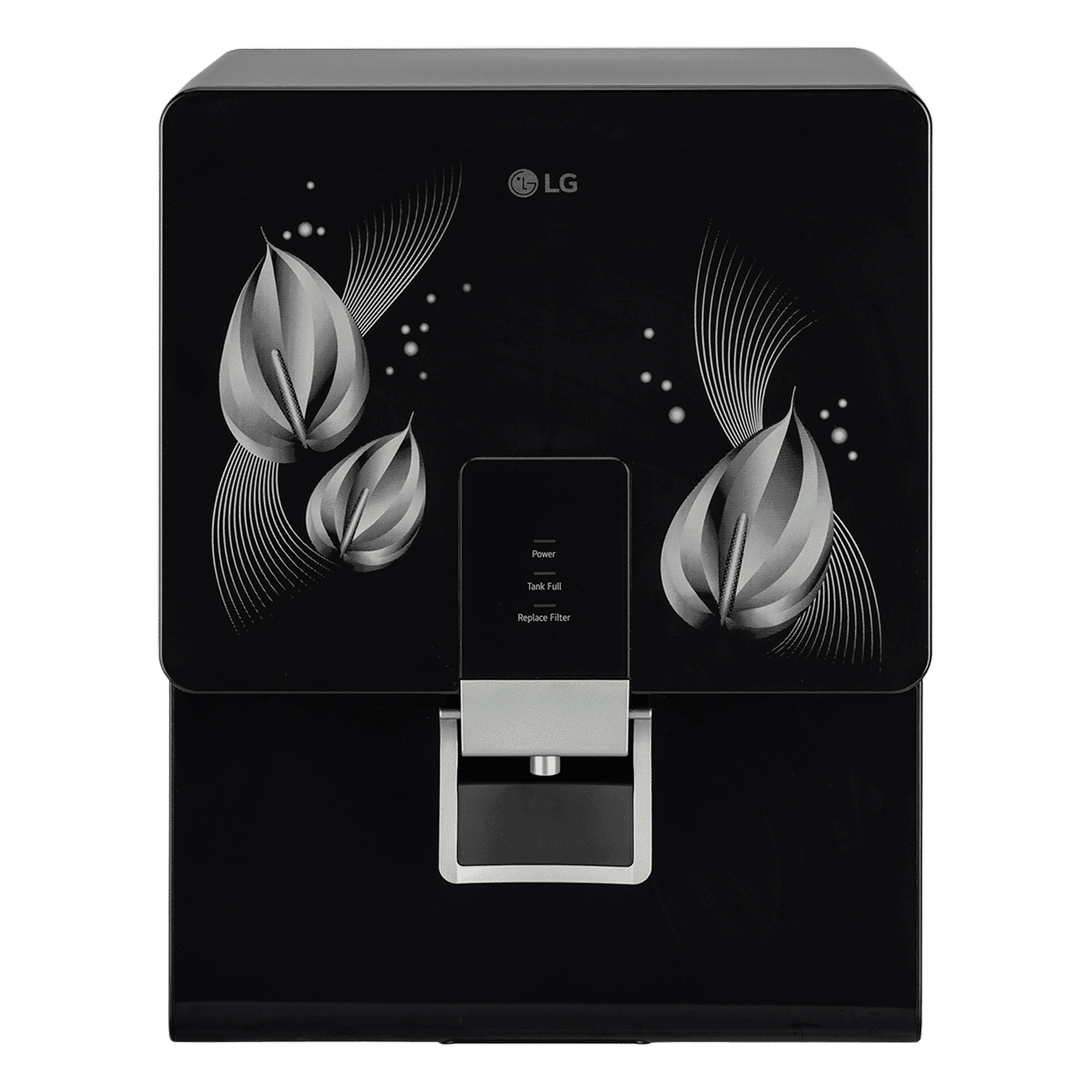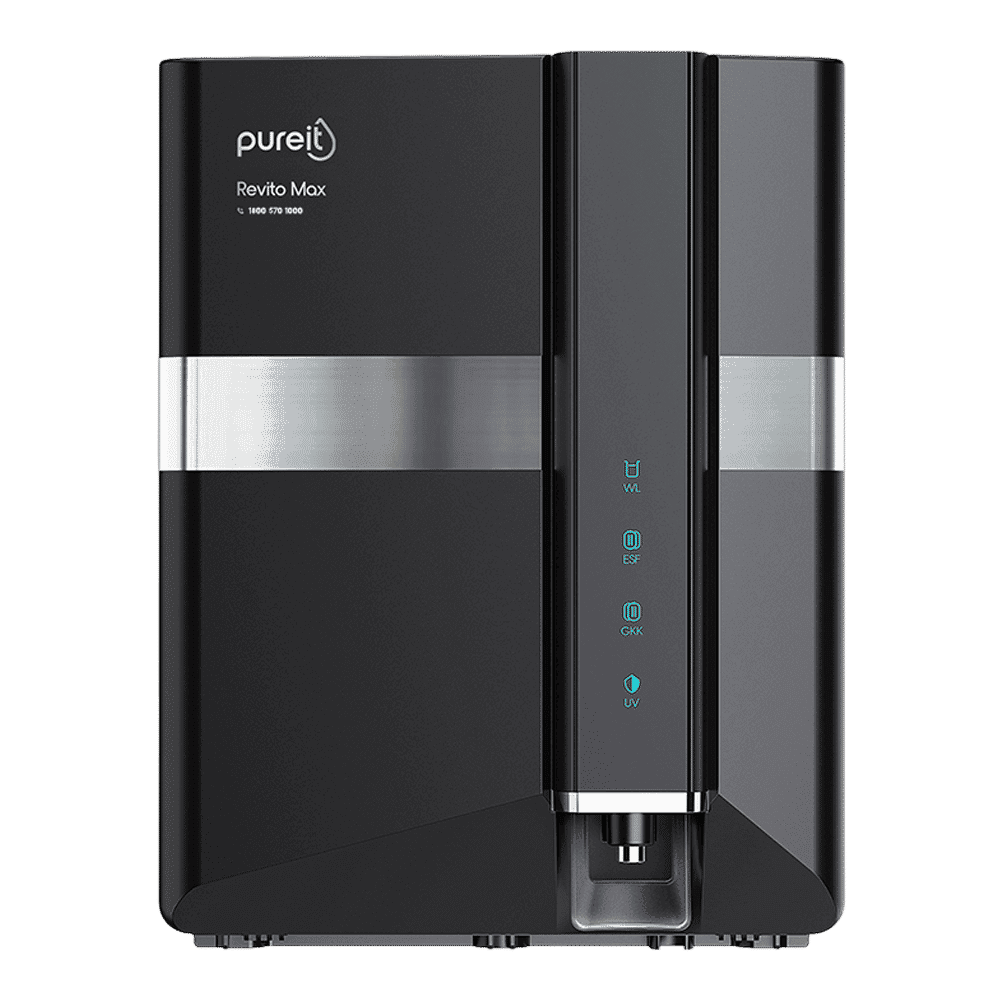
Home Appliances
•05 min read

Buy LG WW146RTLB 8L RO + Mineral Booster Water Purifier with Multi Stage Filtration (Solid Black) online at best prices from Croma. Check product details, reviews & more. Shop now!
Every drop of water we drink holds the promise of health and vitality, yet water contamination is an escalating concern worldwide. With increasing awareness about water safety, many households are turning to advanced solutions like the domestic ro water purifier to ensure every sip is pure and nourishing. In this comprehensive guide, we explore everything you need to know about selecting the ideal RO system for your home, covering the basics of reverse osmosis water filter mechanisms, the benefits of safe drinking water solutions, and essential maintenance tips that will keep your home water filtration system in optimal condition.
Reverse osmosis (RO) is a water purification process that uses a semi-permeable membrane to remove contaminants such as lead, arsenic, and fluoride, among others. By forcing water through this membrane, impurities and unwanted chemicals are effectively separated, leaving behind clear, refined water. This technology forms the backbone of many home water filtration systems, ensuring that families can enjoy clean, safe water directly from their tap water purification system.
At its simplest, reverse osmosis is a method for purifying water by removing dissolved contaminants through a specialised membrane. This process is highly effective in filtering out common pollutants and heavy metals. In addition to environmental contaminants, RO systems also improve the taste of water, making it more appealing for everyday consumption.
A domestic ro water purifier is a dependable solution for households aiming to enhance water quality and overall health. With benefits ranging from improved taste to significant health advantages, these systems are designed to provide safe drinking water solutions straight from your kitchen. The technology not only removes harmful substances but also delivers water that is ideal for cooking and drinking, supporting your everyday well-being.
When considering the best water purifier for home use, it is essential to understand the various types available and how they cater to different needs and spaces.
The under-sink RO water purifier is a compact water purifier that blends seamlessly with modern kitchen designs. Its space-saving design makes it an attractive option for urban households looking for efficient ways to purify water without sacrificing valuable kitchen space. These models are designed for convenience and often integrate effortlessly with your existing plumbing, ensuring you have clean water at your fingertips.
For those who prefer a more accessible setup, countertop models offer an energy-efficient water purifier option that is simple to install and maintain. Unlike traditional tank systems, tankless options provide a modern approach to water purification, combining speed with efficiency while maintaining a tidy appearance in the kitchen.
Whole house RO systems cater to larger households or those with specific water needs, such as well water purification. These systems ensure that every tap in your home benefits from pure, filtered water. While generally larger in size, their comprehensive coverage makes them ideal for families prioritising an all-encompassing approach to water safety.
Investing in a domestic ro water purifier involves more than just choosing the latest gadget. Understanding your local water quality, as well as your household’s specific needs, can guide you to the ideal system.

Buy pureit by HUL Revito Max 9L RO + MF + UV-in-tank + Mineral Enriched Water Purifier with Advanced 8 Stage Purification (Black) online at best prices from Croma. Check product details, reviews & more. Shop now!
Before selecting an RO system, assess your local water quality. This assessment will help determine which contaminants are present and ensure you choose a reverse osmosis water filter that effectively targets those impurities. Whether the issue is high fluoride levels or heavy metal contamination, the right system will address these concerns while delivering safe drinking water solutions for your family.
Household size and daily water consumption play significant roles when selecting an RO water purifier. A system that is too small might not meet daily usage requirements, while an oversized model may lead to unnecessary expenses. Evaluating these factors ensures you invest in a system that operates efficiently and within your budget.
Regular maintenance is crucial to the longevity and performance of any domestic ro water purifier. RO system maintenance tips include timely filter replacements and periodic system sanitisation, which helps to maintain the quality of your drinking water while extending the system’s life. Following manufacturer guidelines for cleaning and replacing parts ensures that your water purifier continues delivering optimal performance year after year.
Choosing a water purification system with recognised certifications, such as NSF/ANSI standards, is vital. These certifications provide assurance of the system’s ability to remove harmful pollutants. Additionally, selecting a model constructed from durable materials means it will withstand regular use while providing consistent, reliable performance.
Beyond understanding the technology and knowing your needs, there are practical considerations for making an informed purchasing decision regarding your domestic ro water purifier.
When comparing available options, consider reading customer reviews and comparing features to ensure you select the best water purifier for home use. Look for models that balance performance with user-friendliness, ensuring that the system aligns well with your household’s water consumption and quality requirements.
Cost is often a critical factor in any purchase decision. The price range for RO water purifiers can vary, and it’s important to balance cost with quality. Investing in a system that provides efficient purification while offering robust after-sales support can save you money in the long run, particularly when looking for a solution that fits within your budget.
Choosing an energy-efficient water purifier not only helps reduce your utility bills but also supports environmental sustainability. Systems designed with energy conservation in mind offer an elegant blend of modern technology and economic practicality, making them ideal for eco-conscious households.
Pro Tip from Tata Neu:
Did you know? Regular maintenance of your RO water purifier, including timely filter replacements, can extend its lifespan by up to 5 years. Keep your system running efficiently for safe and clean drinking water every day.
Proper maintenance is paramount for ensuring that your domestic ro water purifier continues to perform at its best over the years.

Buy Aquaguard Enrich Superio 6L RO+UV Water Purifier with Active Copper Zinc Booster Technology (Black) online at best prices from Croma. Check product details, reviews & more. Shop now!
Replacing filters on schedule is essential for maintaining water quality. Continuous use without timely replacements can compromise the performance of the reverse osmosis water filter, leading to diminished results over time.
Alongside filter replacements, cleaning the system periodically prevents bacterial build-up and maintains the overall hygiene of your tap water purification system. Simple cleaning routines—using mild, approved cleaning agents—can keep the system in top condition, ensuring that every drop of water remains pure and healthy.
If you experience reduced water flow or notice an unusual taste, these could be signs that your system requires attention. Often, such issues can be resolved by checking the filter status or performing a routine cleaning. Maintaining vigilance and addressing minor faults quickly will ensure your system continues to deliver optimal performance.
The ideal RO water purifier for your home depends on your household size, water quality, and specific needs. Look for systems with recognised certifications and robust contaminant removal capabilities.
While reverse osmosis systems efficiently remove contaminants, they may also strip away beneficial minerals from the water. Some systems now include remineralisation filters as a solution.
Yes, comprehensive whole house RO systems are available for larger households or homes with unique water treatment requirements, delivering purified water to every tap.
Typically, filters should be replaced every 6 to 12 months, depending on usage and the quality of your local water supply.
Absolutely. Modern RO systems, especially tankless models, are designed to be energy-efficient while delivering exceptional water purification performance.
In summary, choosing the right domestic ro water purifier is all about understanding your local water conditions, your household’s water consumption needs, and the importance of regular maintenance. A thoughtful selection, based on reliable certifications, budget, and energy-efficient features, can transform your water consumption experience, ensuring each glass is a step towards a healthier lifestyle. With the convenience and benefits offered by advanced water purification systems, you not only secure safe drinking water for your family but also enjoy peace of mind knowing that every sip contributes to your overall well-being.